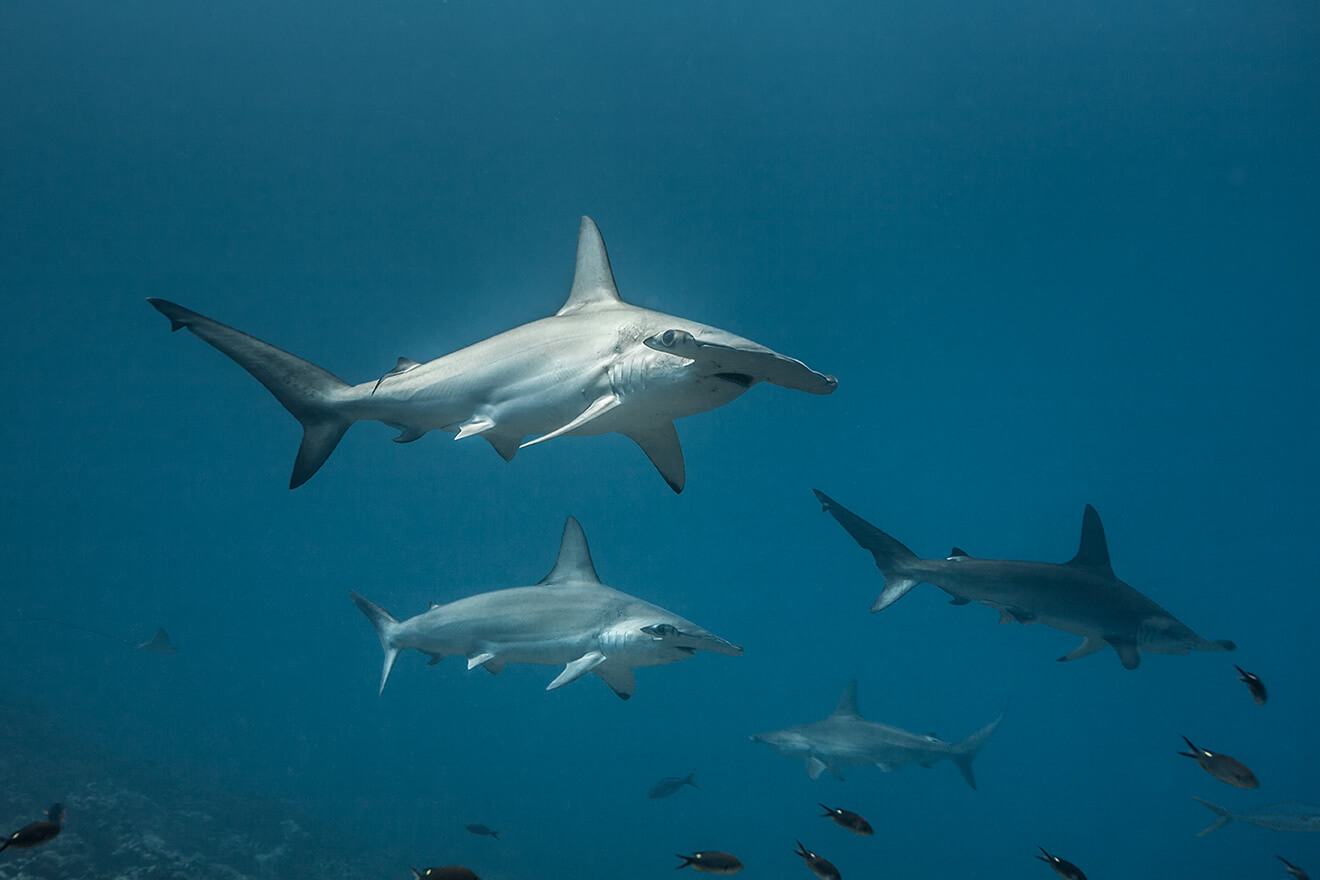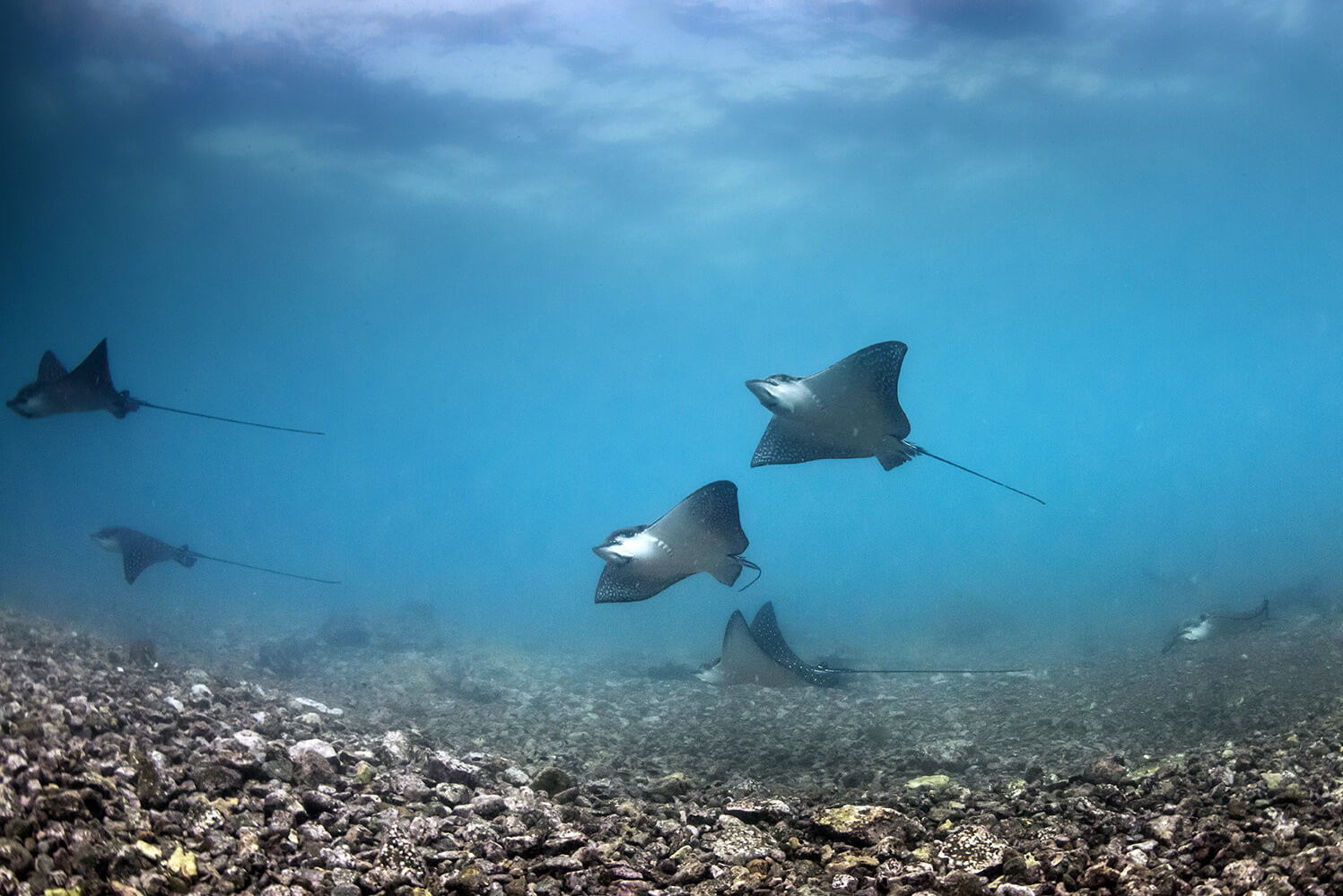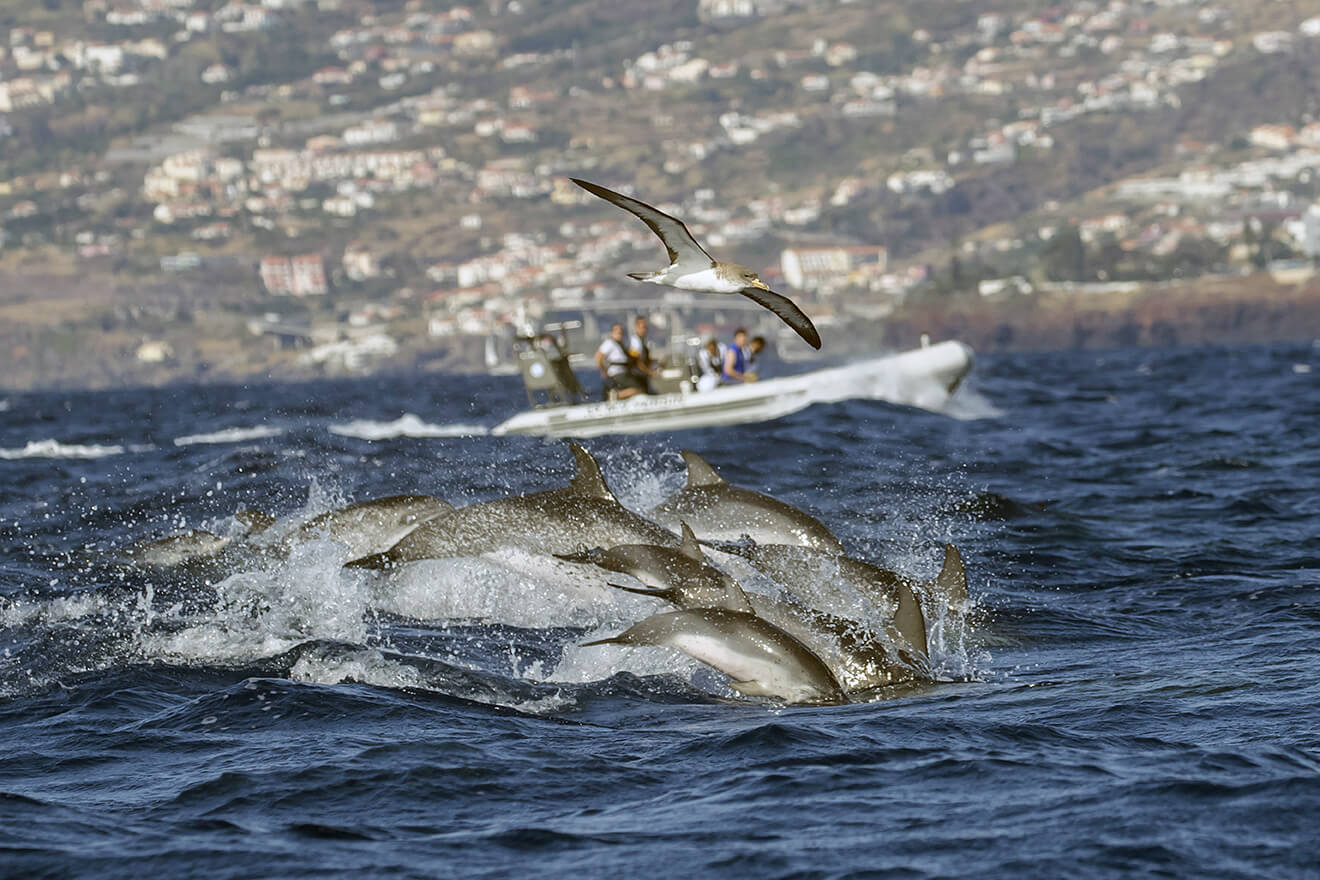Protection of the megafauna
The first mission of Monaco Explorations in Madeira in September 2017 focused on one of the currently most endangered marine mammals in the world. The worrying situation of the Mediterranean monk seal (Monachus monachus) reflects the status of most of the large predator populations in the world, both on land and at sea. Their study and their conservation has now become essential to the preservation of natural balances.
Megafauna?
The term includes all the mammals, turtles, rays, sharks, and bony fishes as well as the seabirds that inhabit the seas. As for corals, the status of these animal populations is one of the major indicators of the health of oceans and of the marine biodiversity.
Shoal of Barracudas. Malpelo. Colombia © Olivier Borde. Monaco Explorations.
At the centre of the picture, three Leather bass Dermatolepis dermatolepis specimens. Malpelo. Colombia.
© Frédéric Buyle. Monaco Explorations.
Shoal of tropical pilot whales, Globicephala macrorhynchus, in open water. Madeira © Olivier Borde. Monaco Explorations.
Dusky grouper, Epinephelus marginatus. Madeira © Frédéric Buyle. Monaco Explorations.
Mediterranean monk seal Madeira © Frédéric Buyle. Monaco Explorations.
Green turtle, Chelonia mydas. Anses d’Arlet. Martinique © Fabien Lefebvre. CNRS/IPHC.
Bottlenose dolphins in open water, encountering the diver.© Frédéric Buyle. Monaco Explorations.

The large marine predators in decline
Subject to many human pressures, such as over-fishing and illegal fishing, the reduction of natural habitats, noise and plastic pollution or increasing maritime traffic, most of the marine megafauna species have been steadily and massively declining over the last 50 years. Yet the large predators, at the top the the food web, play a fundamental role in the regulation of underwater balances and predator/prey relationships.
A risk: the cascade effect
The disappearance of top predators creates a disequilibrium which propagates through the lower trophic levels, as shown by scientists, for example in the case of over-fishing: when the large predators are fished out, the living creatures in the level just below then develop without any regulation, too much for the resource consisting of their prey which they consume to exhaustion. Having no more food, they decline… and so forth.
Islands and isolated seamounts: last refuges?
The islands and isolated seamounts lost in open seas are study destinations particularly targeted by Monaco Explorations. The biodiversity inventories carried out during the missions seem to show that large predators find refuge there, including in the depths, far from Man, and may be able to adapt their behaviour and their way of living to remain out of reach of human pressure… A hypothesis which is still to be confirmed.


The Principality mobilised
Many programmes are supported and developed in the world by the Principality of Monaco in order to contribute to the sustainable protection of the megafauna and the acquisition of the means to reach this objective; the projects of the Prince Albert II Foundation for the protection of the monk seal or the whale shark, the recent opening of a Rescue and Rehabilitation Center for marine turtles at the Oceanographic Museum or awareness-raising among sea users are some examples.
